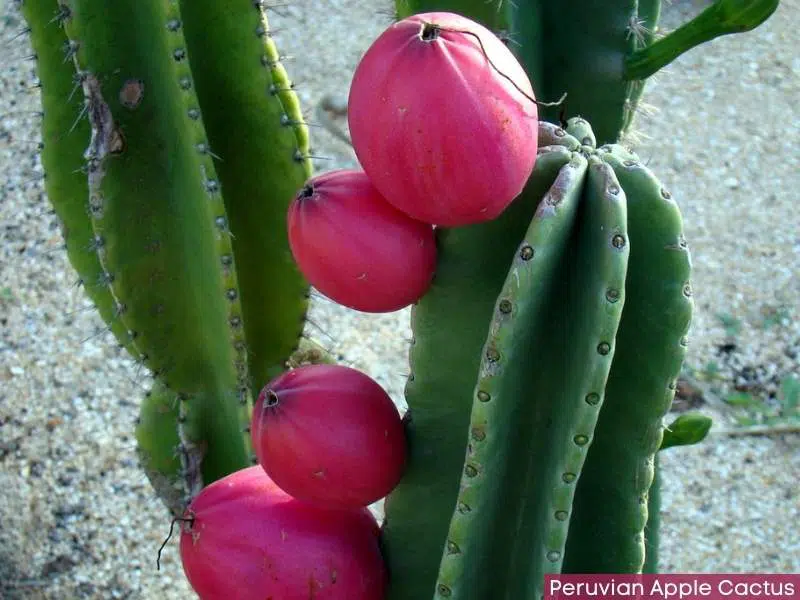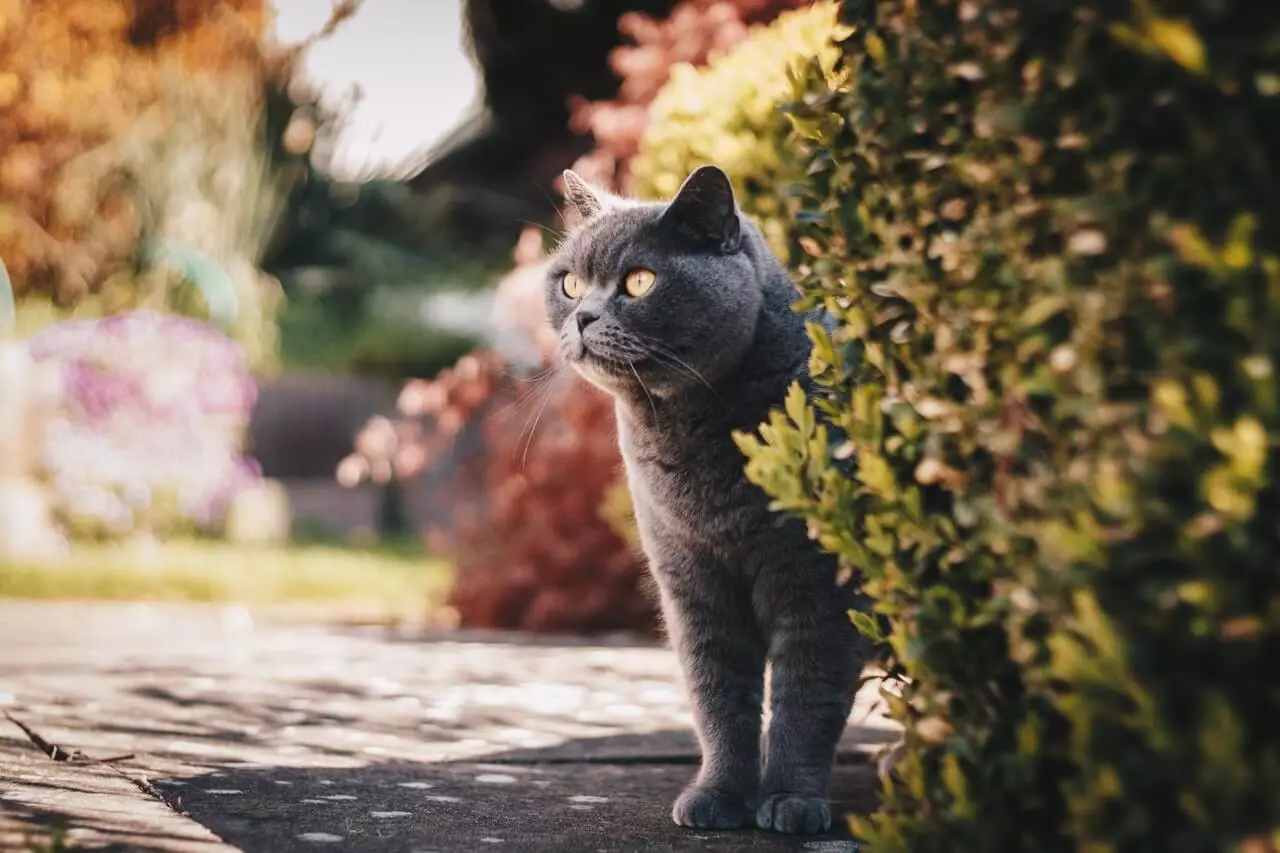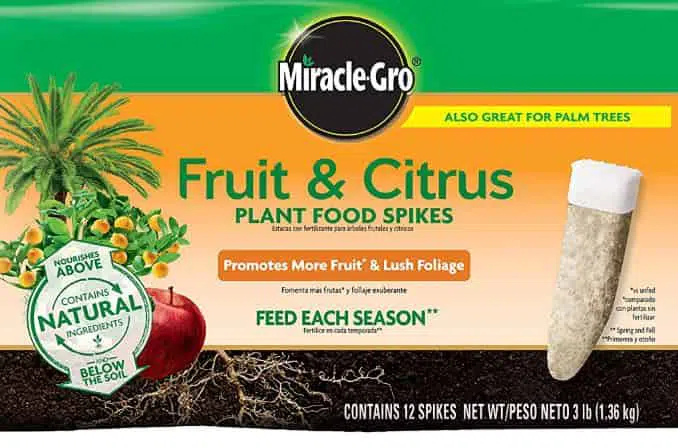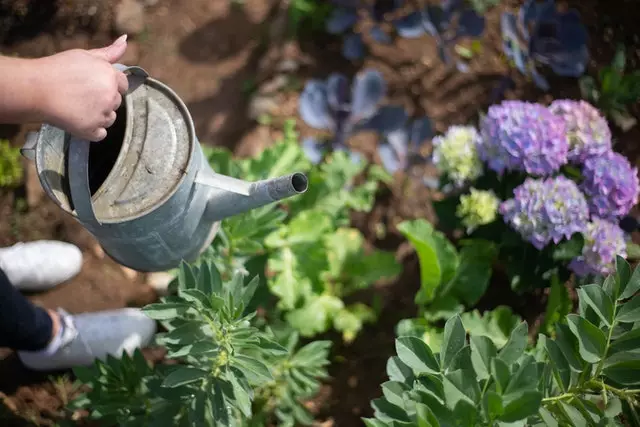Aglaonema is a popular choice for plant lovers looking for a natural aesthetic appeal in their homes, offices, and other spaces. You can grow the plant in a growing pot or outdoors easily if you understand the optimal growing conditions and the minimum requirements for cultivating an aglaonema plant.
Although some variants of the species might be mildly toxic, the benefits of growing aglaonema species greatly outweigh the risks.
How many types of aglaonema are there?
There are over 20 different species of aglaonema spread out across the globe. You can differentiate between the species by looking at their leaves, colors, and flowers.
The plants do well in a warm frost-free climate. They are native to the tropical regions of Asia that include countries such as the Philippines, Thailand, Indochina, Sumatra, Laos, and New Guinea.
10 Best Aglaonema varieties
Aglaonema is available in many varieties whose leaves have ornamental value and lots of other benefits. The choice of best aglaonema varieties relates primarily to the owners’ preference.
Here are some of the best aglaonema varieties:
1. Aglaonema Red Valentine (Chinese evergreen lady)
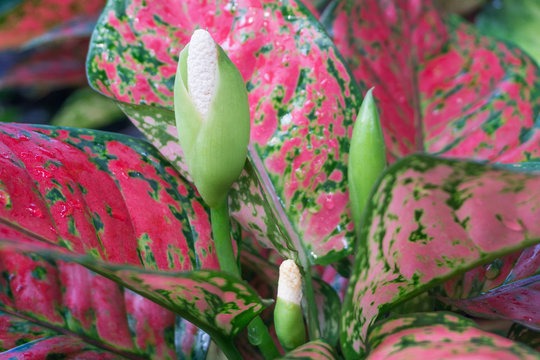
The aglaonema red valentine (Aglaonema commutatum) is a beautiful plant with bright green, red, and pink leaves. The plant is suitable for indoor decoration since its average height is between 30″ and 36″.
The Chinese evergreen lady prefers dim sunlight and can survive under minimal care. Aglaonema is best grown in moist soil but suffers from overwatering if exposed to too much water for a sustained period.
A primary purpose of the aglaonema plant is decoration. The Chinese evergreen lady also acts as a natural choice for air purification by removing dangerous toxins and chemicals from the air within your home and increasing oxygen levels.
2. Aglaonema Golden Madonna
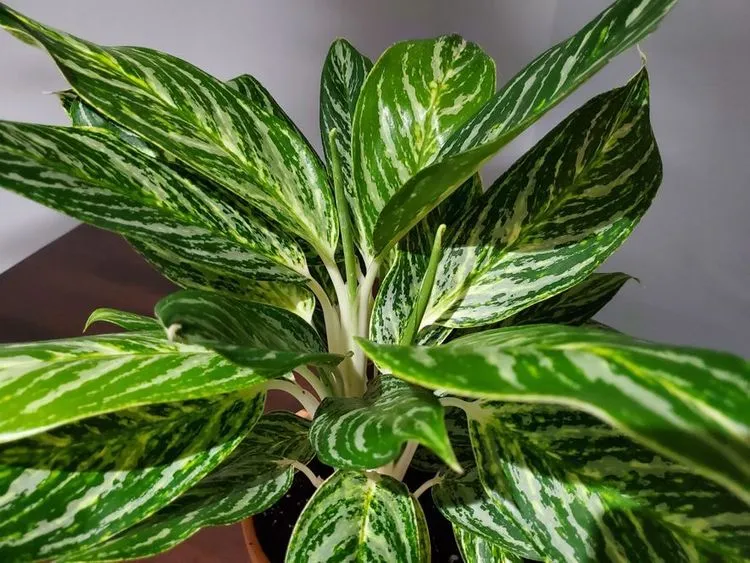
The aglaonema Golden Madonna is one of the best-known varieties of the aglaonema species. The plant features broad leaves, predominantly green color with some variation having yellow/silver pigmentations along the veins on the upper surface of the leaves.
The plant is relatively short with a height of about 8″-12″ and a moderate width that can fit in a 6″ diameter growing pot. Golden Madonna plants often propagate through cuttings and have perennial traits.
Aglaonema gold Madonna plants are hardy and need little maintenance, making them an ideal choice for most households. The plants do well in dim sunlight, and moist soils (but might occasionally need fertilizer to promote foliage growth).
3. Aglaonema Pictum tricolor
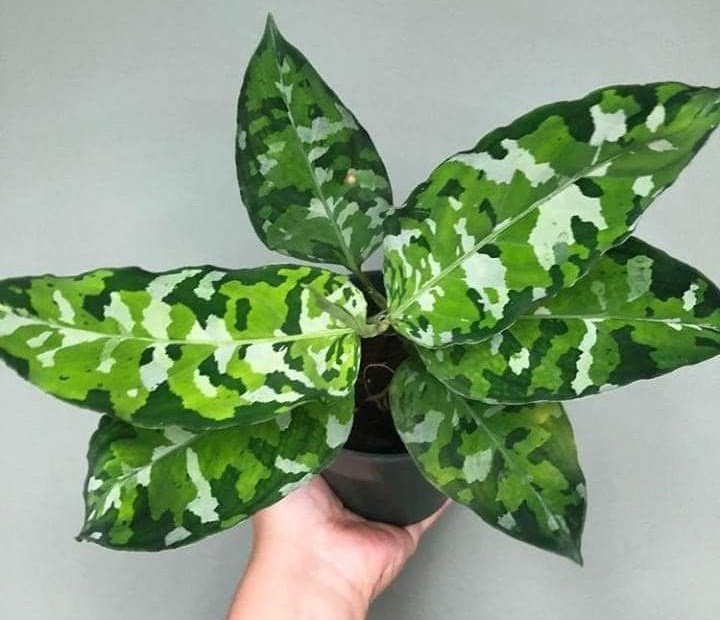
An aglaonema Pictum tricolor is a popular option for most modern homeowners looking for a low-maintenance natural plant. The species is easily recognizable by its green camouflage patterns on the upper sides of the leaves.
You can easily distinguish the species from others by considering the color of its variegations. Most Pictum tricolor varieties have alternating shades of green (light green, regular green, and dark green in some plants).
Aglaonema Pictum tricolor is easy to maintain. The plants require regular but indirect sunlight, moist soils, and an occasional supply of foliage fertilizer. Occasionally water the top inch of the potting to keep your plant healthy and reduce instances of overwatering.
4. Aglaonema Green Papaya
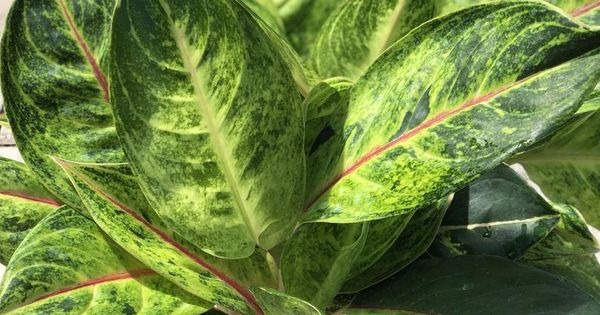
The aglaonema green papaya is an excellent choice for home decoration (and might have additional benefits such as air purification). The plant is easily distinguishable from other varieties by the color of its leaves.
The green papaya variety has a dominant pink color along its midrib and veins on the leaf surface. The leaves also feature dark green color with subtle shades of light green on surfaces close to the center of the leaf.
Aglaonema green papaya leaves are remarkably easy to grow, care and maintain. The green papaya variety, like others within the species, the green papaya variety prefers dim sunlight, warm tropical climates, and little water to survive.
5. Aglaonema Simplex variegated

The aglaonema simplex is native to Southern Burma and parts of South East Asia. The plant features a dominant green color without the constant color variations common in other variants of the same species.
Variations within the aglaonema species highlight differences in leaf size and shape. Some plants might exhibit narrow leaves; others have broad leaves consistent with most descriptions of the plant.
Aglaonema simplex is a single-stemmed plant that tolerates dim light, and warm conditions and can go for an extended period with minimal water. The plants serve a decorative purpose and can be especially useful indoors.
6. Aglaonema Rotundum Aceh
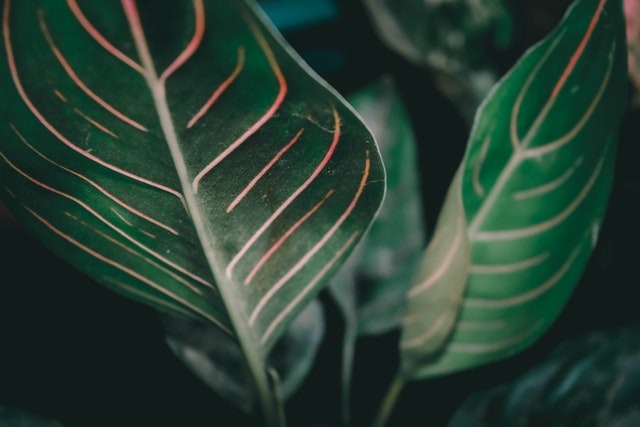
The aglaonema Rotundum Aceh is a striking plant that easily stands out from others within the species. The plant features (almost) round leaves and pink-like strips across its veins. Native to Indonesia, the Aglaonema Rotundum Aceh is ideal for decoration since its short stature makes it suitable for indoor spaces.
The average height of an aglaonema Rotundum Aceh is about 50 cm. You can tell it apart from the others by looking at its dark green/almost black leaf color. It is quite a contrast to the pink-red markings on the midsection of the leaf.
The plant does well in dim sunlight, and moist soil and can survive even under minimal maintenance.
7. Aglaonema Lotus Delight
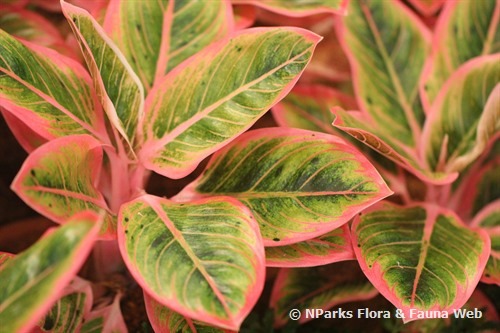
The aglaonema lotus delight is a popular choice for decoration within indoor spaces. The plant features a distinct shade of pink and green on its leaf surface. You can easily distinguish it from other variations with similar pink colors by considering the location of the color changes.
There’s an elaborate bright pink color on the edges and middle of the aglaonema lotus delight that stands out. The plant is short in stature and shares the benefits common to other aglaonema plant species – air purification, decoration, and an easy maintenance schedule.
8. Aglaonema Suksom Jaipong
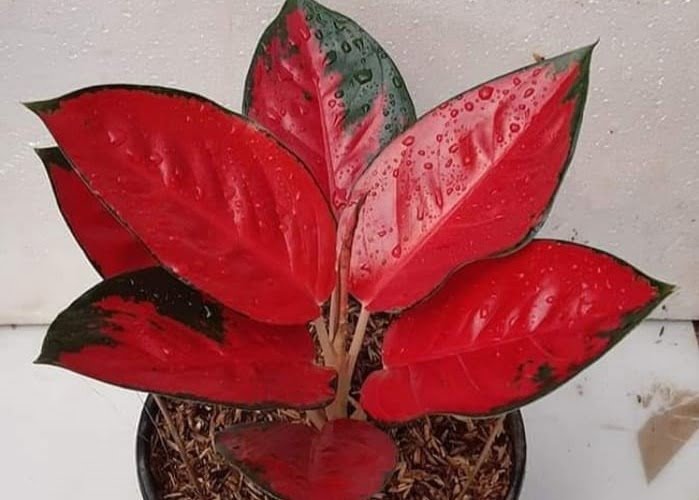
The aglaonema Suksom Jaipong plant is a unique plant with very distinct features. The leaves of the Suksom Jaipong are predominantly red in hue, while small sections of the foliage exhibit a green color.
The plant does well in moist soils, requires little natural light (can do well under fluorescent lighting), and might need foliage fertilizer at least twice a year. (The best time to add fertilizer is during the summer and spring months when the plant is actively growing).
Aglaonema Suksom Jaipong is an excellent choice for home and office decoration. The plant’s red foliage adds a touch of color to your living space. Also, the plant requires minimal upkeep and can go for a long time without attention.
9. Silver Bay Aglaonema
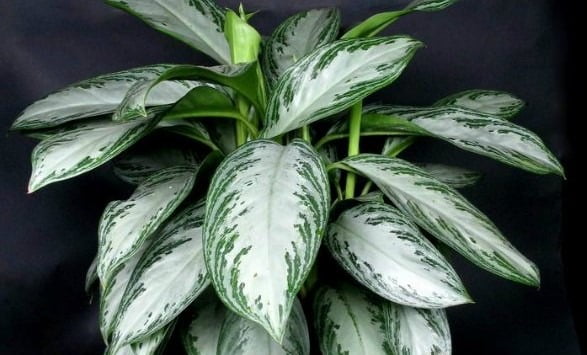
The silver bay aglaonema occurs naturally in the tropical regions of Asia. The species is a popular choice for homeowners looking for a low-maintenance plant that can withstand prolonged periods of neglect.
The silver bay aglaonema is well known for its distinct leaves, which have elaborate silver markings on the upper surface of the leaves. The plant grows to about four feet high; the leaves can measure around 9” to 12” if measured from the center.
The species produces a conspicuous flower with a light green spathe and white spandex. However, the plant only blooms under ideal conditions (which might not always be the case if the plant only grows indoors). It also prefers bright but indirect sunlight, moist soil, and little water to survive.
10. Aglaonema Sparkling Sarah
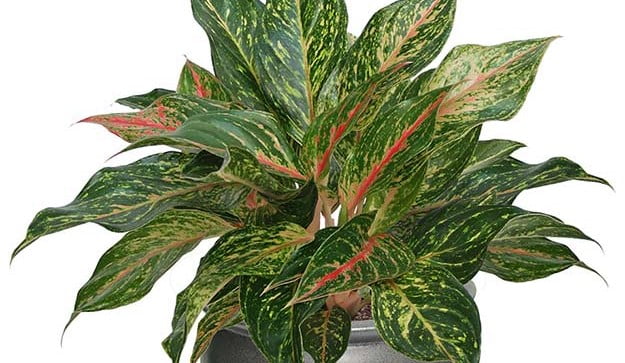
The aglaonema sparkling Sarah is a Thai hybrid that shares a resemblance to the lotus delight. The plant is an excellent choice for indoor propagation, given that its average size is about 18”-24”.
Unlike the lotus delight, the aglaonema sparkling Sarah has pink color variations along the inner sections of the plant. The species also blooms occasionally when the conditions are right. The flowers of the aglaonema sparkling Sarah have green-white spandex and spathe.
The aglaonema sparkling Sarah is slightly toxic to pets and humans if interested. The sap can cause stomach discomfort and skin irritation if it comes into contact with sensitive areas of your body.
What are the rare aglaonema varieties?
Aglaonema comes in a variety of rare species. One of the rarest varieties of the plant includes the aglaonema pink star, super white, and others. The species shares some characteristics with the more widespread varieties, including ideal growing climates, water requirements, etc.
The following are just a few examples of rarer aglaonema species (with its most distinguishing features for easy identification).
- Aglaonema Red Siam Aurora: Green- Red pointed leaves.
- Aglaonema Big Roy: Pink- Green leaves with pink the more dominant color.
- Aglaonema Morodoklok: Green-white leaves with the white color splashes featuring dominantly.
- Aglaonema super white: A dominant white color appears on the leaves.
- Aglaonema White Dalmatian: Bright white-speckled leaves with green edges.
